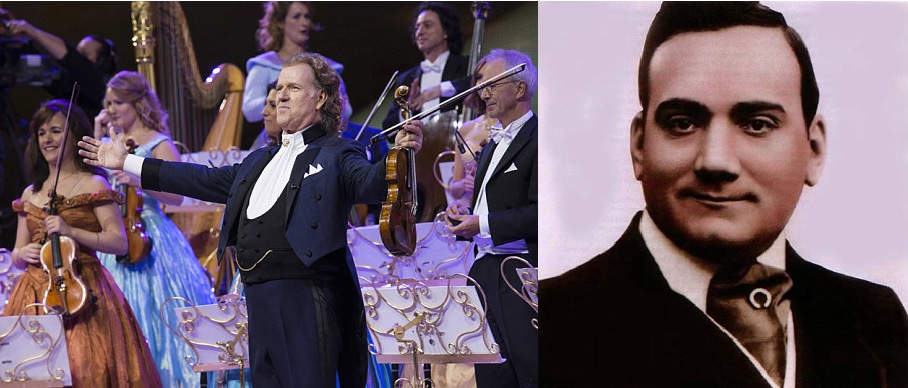Audio Restoration via Separation
Source separation can also be thought as a general tool to extract important audio content from old and damaged audio recordings. Then, the extracted sounds can be mixed with other tracks, perhaps newer and fresher recordings, in order to produce something that will definitely sound better.
Example - Enrico Caruso and Andre Rieu
Have you ever heard about Enrico Caruso? And what about Andre Rieu? I'm sure you certainly have, both are well recognised figures in music. Caruso was a talented italian tenor, whose career spanned from 1895 until 1920. The problem is that almost all existing recordings of him are quite poor in quality (for our present standards). Andre Rieu, on the other hand, a dutch violinist and conductor, is quite active nowadays, producing lots of music and giving shows with his orchestra. It would be nice if we could just listen to these two great artists playing together...

Well, this is exactly what we will try to do in this example. We've got two audio excerpts, one is from a 1916 recording of Enrico Caruso singing the song O Sole Mio, while the second one, from a modern stereo recording, has got Andre Rieu and his orchestra playing the music for the very same song without any vocals. Use the controls below to listen to these two recordings.
Using the estimation/separation process Enrico Caruso's voice can be extracted from the old recording, leaving behind the old accompaniment from 1916. You can listen to the isolated vocals by using the controls below.
Now, having Caruso's voice in one track and Andre Rieu's orchestration in another stereo track, we can mix them together to create our new recording. We have to be careful though, because aligning these two sections can be difficult, mainly because they were independently recorded, so they are not completely synchronised. Nevertheless, the results presented here are mostly aimed to show the potential of these techniques by creating an interesting illution, just as if they were actually playing together. Listen to the final results with the audio controls below.